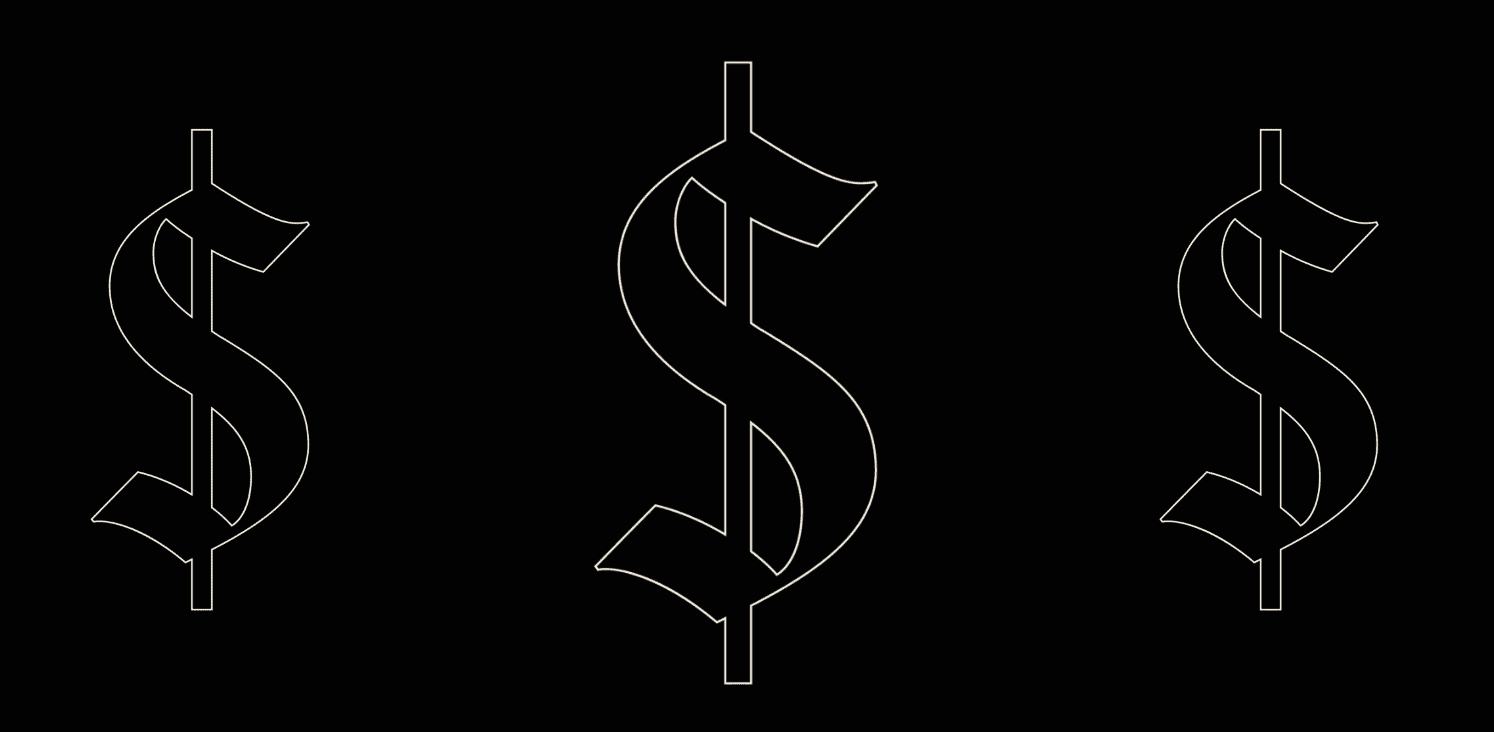W.T.F is the TFSA and why do I need one?


Table of Contents
introduction
It’s never too late to start taking advantage of your TFSA – aka the Tax-Free Savings Account. And it’s never too late to learn the benefits of the TFSA, or to learn how you can best use it to reach your financial goals. I’m guessing you’re very much like me…
I received very little financial literacy education at school and none via the adults in my life. I’m also gonna go out on a limb and say, you’re frustrated by your lack of knowledge on TFSAs. Don’t worry, no judgment coming from me. I not too long ago was in the same position as you, searching endlessly to understand the so-called TFSA.
Lucky for you, I’ve compiled all the basic knowledge you need to understand TFSAs in this guide. This guide is for all my Canadian friends who are looking to figure out:
-
-
-
- What is the TFSA?
- How to open a TFSA and Who can open a TFSA?
- How to contribute to a TFSA?
- How to withdraw from a TFSA?
- What are the best uses for the TFSA?
- How to optimize your TFSA?
-
-
SECTION 1
What is the TFSA?
The Tax-Free Savings Account also known as the TFSA, unfortunately for us millennials has a very misleading name…
I’m CONVINCED whoever named it tried to PLAY US.
It is in fact NOT just a tax-advantaged savings account but it is an incredibly useful investment vehicle. And the biggest mistake you can make with your TFSA is not utilizing its power as an investment tool! Many in the personal finance community prefer to think of it as a TFIA, a Tax-Free Investment Account!
Your TFSA is an account that does not have taxes applied to any contributions or capital gains made within the account, so it is a tax sheltered account. All contributions made, earned interest, and dividends can also be withdrawn tax-free. However, contributions are not tax deductible for income purposes, like an RRSP – Sorry, no tax refund here! You contribute after-tax dollars and if you happen to make bank through your investments, it’s tax-free when you withdraw forever!

For all the people in the back! I repeat, all TFSA withdrawals are tax-free FOREVER!
Within a TFSA you can hold cash deposits, bonds, GIC’s, mutual funds, stocks, and ETFs. Think of a TFSA as a basket where you can hold varying investments and cash to grow tax-free…
So if you’re an advocate of the tax-free lifestyle but prefer to not evade the law as alluded to by GZA of the infamous Wutang Clan (ALLEGEDLY)…
The TFSA is for you; Tax benefits with no understanding of taxes required!
“ I’m on some tax-free shit by any means, whether bounty-hit scheme or some counterfeit CREAM ”
– GZA, Wu Tang Clan, 4th Chamber
SECTION 2
How to open a TFSA?
You can open a TFSA through your financial institution of choice, a bank, credit union, online broker, or a trust company. Additionally, you can open up more than one TFSA with many financial institutions. If you want to hold cash in one TFSA and invest in another this is a possibility. But, be sure the total amount contributed to all your TFSAs is not more than your total contribution room! Do not, I repeat DO NOT deposit $6000 into 5 different TFSAs each calendar year. Because if you do, the Canada Revenue Agency will be on yo’ ASS for tax evasion!!
P.S. – we’ll talk more about contribution room later.
SECTION 3
Who can open a TFSA?
Any Canadian resident who is 18 or older, with a valid social insurance number can open a TFSA.
OKAY, so what’s the catch?
There must be a catch because it is impossible to avoid paying taxes …
Fine, fine, there are two minor catches.
Catch number one is that, if you hold U.S. stocks that pay out dividends, these dividends are subject to a 15% withholding tax. Unfortunately, the IRS doesn’t care that TFSAs are meant to be tax-free… (Overall, this is not likely to have a huge effect on your portfolio provided you have diversified your assets)
And catch number two is that, while your money can grow tax-free within a TFSA, the TFSA does have a yearly contribution limit…
SECTION 4
How to contribute to a TFSA?
The 2020 contribution room limit is $6,000. However, your individual contribution room is dependent on the calendar year you turned 18 years old. But, for anyone 18 before 2009, you begin calculating your contribution room in 2009, when the Canadian government introduced the TFSA. Contribution room accumulates yearly as a Canadian resident and any unused contribution room carries forward each year. So if you were 18 or older in 2009 and have never opened a TFSA in 2020 your contribution limit will be a WAPPING $69,500.
Because your contribution room accumulates yearly this means as a millennial you may have upwards of $50,000 worth of contribution room, if you’ve never opened or contributed to a TFSA previously. But, if you’re like me and don’t have 40 to 50 stacks laying around to contribute to your TFSA… it’ll be available in the future for you to use since you do not lose your available contribution room.
Additionally, if your investments increase within your TFSA it does not affect your available contribution room. Let’s say you maxed out your contribution room of $12,000 as someone who turned 18 in 2019. If your account appreciates to $12,500, between 2019 and 2021. In 2021 your contribution room remains at $6,000 for the year!! Your account appreciation of $500 is not deducted and has no effect on your ability to max out your TFSA in 2021.
Lastly, you can only contribute up to your personal limit, and a 1% tax applies to any contributions made over this limit.
The Canada Revenue Agency determines your personal contribution room limit based on the following factors:
● The current yearly TFSA limit $6,000 (as of 2020)
● Any amounts that were withdrawn from your TFSA in the previous calendar year
● And all unused contribution room from previous years in which you were 18 or older
You can use the tables below to estimate the TFSA contribution room available to you.
Disclaimer: This table is for estimation purposes only. The CRA keeps track of your contribution room limit and you can obtain a more accurate estimation using the My Account feature created by the CRA. However, note that your My Account is updated on a yearly basis, so it does not account for any contributions or withdrawals made within the current year.
|
Year |
Yearly Limit |
Cumulative Total |
|
2009 |
5,000 |
5,000 |
|
2010 |
5,000 |
10,000 |
|
2011 |
5,000 |
15,000 |
|
2012 |
5,000 |
20,000 |
|
2013 |
5,500 |
25,500 |
|
2014 |
5,500 |
31,000 |
|
2015 |
10,000 |
41,000 |
|
2016 |
5,500 |
46,500 |
|
2017 |
5,500 |
52,000 |
|
2018 |
5,500 |
57,500 |
|
2019 |
6,000 |
63,500 |
|
2020 |
6,000 |
69,500 |
SECTION 5
TFSA Account Withdrawals
You can withdraw money from your TFSA at any time, and as mentioned before all withdrawals from your TFSA are tax-free honey! The CRA accounts for withdrawals from your TFSA in the following calendar year, meaning that you can later re-contribute the amount that you withdrew. And to replace the withdrawn amount within the same calendar year, you must have contribution room available.
For example, if you withdraw $20,000 as part of your down payment for a new condo in 2020. As of the next calendar year (January 1st 2021), you will have $20,000 added back to your TFSA contribution room. But, if you decided to recontribute the $20,000 you removed within the same year and you have no additional contribution room within your TFSA you’d have to pay the 1% overcontribution tax until you withdraw your overcontributions.

Finally, all money withdrawn from your TFSA is not counted as taxable income – if you take out $12,000 you don’t pay any taxes on it! And since money withdrawn from a TFSA is not considered income, all your TFSA withdrawals will have no effect on any amounts you receive from government assistance programs such as Employment Insurance if you lose your job, your Canada Child Benefit in case you stumble upon a pregnancy in your near future, or your Registered Retirement Savings Plan.
SECTION 6
How to transfer a TFSA?
For those of you who already have a TFSA opened you can have it transferred from one institution to another. However, there is usually a transfer fee. If you’re close to maxing out your contribution room and want to switch institutions. Pay the transfer fee to avoid any penalties from the taxman, and some financial institutions will cover the fee for you if you ASK. Why?… Because they want your business!
SECTION 7
What’s the best use for the TFSA?
Here’s what you need to consider before opening your account …
Decide what you’d like to hold within your TFSA. Do you want your TFSA to hold investments such as stocks, bonds, mutual funds, ETFs, index funds or cash. Then open an account with the appropriate financial institution.
The TFSA is best used to save for your long-term goals such as retirement (In my opinion…) and the power of your TFSA will only be realized if you commit to making contributions on a regular basis. Ideally, you should not withdraw any of the money you have contributed, and hold investments within your TFSA. When you realize the tax you’d save yourself from paying after investing for retirement over 35 to 40 years… the TFSA is a shining star. Imagine traveling at the age of 65 in your retirement. Withdrawing tens of thousands of dollars and not owing the government a penny on that money.
Do you remember the sheer JOY of getting your first paycheck and the immense PAIN you felt after realizing how much money the government SNATCHED from your shallow teenage pockets… need I say more?
I personally hold my TFSA with Wealthsimple, and I am currently using it to save for my retirement. I’m earning interest on my money and when I decide to withdraw my money I will pay absolutely no tax on the capital gains I have received. If you’re also interested in investing within your TFSA, Wealthsimple will manage your first $10,000 for free.
I understand that this is easier said than done. But, even if you can only contribute small amounts of $25 or $50 a month, developing the habit of saving and investing is what’s most important. Why? Because earning tax-free investment returns… on even a small sum of money is better than not utilizing the power of the TFSA at all. One of the biggest benefits of the TFSA is its flexibility. You never lose your contribution room, regardless of whether you contribute or withdraw.
SO START SAVING ASAP, know your contribution limit, and open an account if you don’t have one! The future version of yourself will be so so so grateful.
SECTION 8
Questions to ask yourself to determine if you are optimizing your TFSA
-
- Have you maxed out your contribution room?
No need to feel shame if you haven’t, hell even I haven’t maxed out the contribution room in my TFSA. Most millennials haven’t maxed out their contribution room, but get to work for the sake of your future self and at the very least try to max out your contribution room.
- Are you holding investments within your TFSA?
In short there’s really no reason why you shouldn’t be… prioritizing investments within your TFSA over cash deposits will benefit you greatly in the future. However, that’s not to say that cash savings within your TFSA are completely useless. At the end of the day developing the habit of saving is the most important thing. So, if saving cash is where you’re at and you’re not prepared to invest because you’re working on other goals, or you’re using your TFSA for a short-term savings goal then that’s okay.
- Are you consistently withdrawing from your TFSA?
If you plan on constantly contributing and withdrawing money from your TFSA, perhaps you should consider simply putting your money in a High Interest Savings Account. For example, if you plan on using your TFSA as an emergency fund, I would caution that constantly withdrawing and depositing could end up hurting you. If you happen to over contribute and withdraw multiple times as a result of many emergencies within one year, you may end up paying the 1% over-contribution tax. Alternatively, you could put your emergency fund into a high interest savings account and withdraw without any impact on your TFSA contribution room.
- Have you maxed out your contribution room?
Asking yourself these questions will help you to develop a plan for your TFSA and what goals you’d like to achieve by making the most of your TFSA.
tl;dr
TOO LONG; DIDN’T READ



Let’s be friends.
@HUSTLEANDCASHFLOW
Let’s be friends.
@HUSTLEANDCASHFLOW
Hustle & Cashflow recognizes that our operations as a digital platform take place on unceded Algonquin-Anishinaabe territory (Ottawa, ON). We recognize the historical claim of the original inhabitants and are committed to reconciliation and decolonization. We also encourage you to reflect on whose land you work and live on and if you are unaware, to research and reflect.
WEBSITE BY HERE AND NOW CREATIVE CO © 2020 HUSTLE & CASHFLOW, INC.